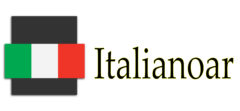Regional Transport Practices (RTOs) are essential to maintaining purchase and effectiveness in the kingdom of street transport. But, the entire potential of RTO assets frequently stays untapped. In this information, we examine the significance of RTO assets and delve in to how their optimization can cause improved functions, increased companies, and a far more streamlined street transport ecosystem.
Modernizing Infrastructure and Techniques:
To discover the possible of RTO methods, it is a must to purchase modern infrastructure and systems. By adopting advanced systems, RTOs may automate operations, minimize paperwork, and reduce administrative burdens. Implementation of user-friendly online systems for services such as for instance car enrollment, certificate renewals, and payment funds may somewhat improve ease for equally RTO personnel and path users.
Empowering RTO Workers:
RTO methods encompass not just scientific advancements but additionally the abilities and understanding of the personnel working within these offices. By giving comprehensive instruction applications, workshops, and qualified growth options, RTOs may empower their staff members to supply excellent services. Well-trained personnel can handle complicated queries, provide exact advice, and guarantee successful managing of documentation, fostering a tradition of brilliance within RTOs.
Leveraging Information for Insights and Improvements:
RTOs acquire huge amounts of information related to cars, licenses, road situations, and more. By harnessing the ability of data analytics, RTOs can obtain important insights in to traffic styles, license conformity costs, and vehicle performance. These insights may push evidence-based decision-making, ultimately causing the implementation of targeted road safety methods, enhanced source allocation, and improved overall performance of street transfer systems.
Enhancing Client Knowledge:
RTO resources must be centered on providing exceptional customer experiences to street users. Implementing user-centric methods, such as for example on the web appointment methods, smaller waiting times, and apparent connection routes, can greatly enhance client satisfaction. Furthermore, proactive conversation regarding any changes in regulations, documentation requirements, or company techniques can help users steer the RTO processes smoothly and efficiently.

Strengthening Interagency Relationship:
To understand the total potential of RTO sources, collaboration with different agencies and stakeholders is vital. Easy integration with police agencies, traffic administration authorities, and vehicle inspection stores can cause increased coordination, increased enforcement of regulations, and effective sharing of information. That effort can result in better path protection steps, paid off traffic congestion, and an even more holistic approach to managing the transport RTO training resources.
Realization:
Optimizing RTO sources is instrumental in driving quality and performance within the trail transport sector. By modernizing infrastructure, empowering workers, leveraging information ideas, enhancing client experience, and fostering interagency effort, RTOs may unlock their full potential. This can not just bring about structured procedures and increased solutions but additionally contribute to safer streets, increased user pleasure, and a more sustainable and effective road transfer environment for all.
